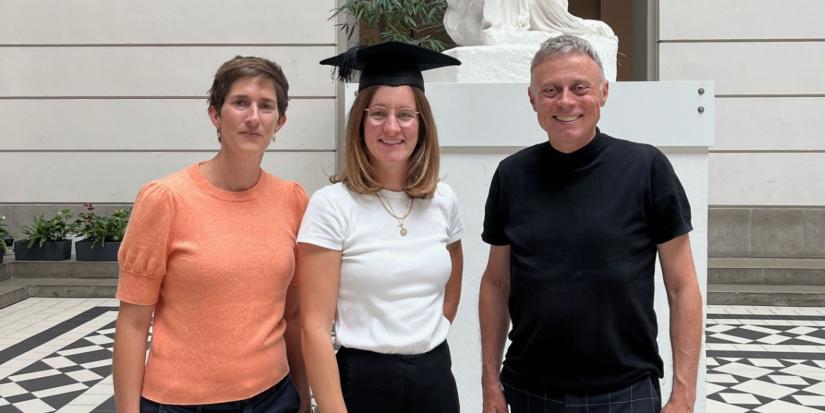The next industrial revolution
Smartphones, solar panels and probiotic yogurt? A collaborative PhD took Annika Wambsganss across two continents to explore the future of manufacturing.

Collaborative PhD student Annika Wambsganss focused on printed electronics in her research into technology convergence. Photo: Adobe Stock.
Three and a half years ago, Annika Wambsganss didn’t know it was possible to conduct a PhD across two universities. She was holidaying in Melbourne when she stumbled on the research position online.
“I still wake up sometimes and can’t believe this actually happened,” she recalled.
Annika contacted Dr Nathalie Sick in the Centre for Advanced Manufacturing at UTS. She flew to Sydney in the same week to meet Dr Sick and connect virtually with Professor Soren Salomo, Dean of Research at TU Berlin.
Today, Annika is in the final stages of completing a collaborative PhD between UTS and TU Berlin. Further, her co-authored thesis article was published in the prestigious Journal of Product Innovation Management (JPIM).
Collaborating across continents
The UTS Collaborative PhD program supports candidates to pursue their PhD degree across UTS and an international partner university. Students are co-supervised by academics from each university throughout their candidature and get to experience life and academia in both countries. TU Berlin is one of UTS’s Key Technology Partners and ranks equal 45th in the world for engineering and technology (QS World University Rankings by Subject 2024).
In 2022, Annika arrived in Sydney to complete the final stretch of her program. During her time at UTS, she was awarded the Higher Degree Research Women in Engineering and IT Award and connected with the international research community.
Reflecting on her time as a collaborative PhD student, she said, “The challenges that it brought were also my greatest source of inspiration.
“It was quite intense, but also, when you get out of your comfort zone is where you grow.”

From left to right: Dr Nathalie Sick, Annika Wambsganss and Professor Soren Salomo. Photo supplied.
Manufacturing in the era of Industry 4.0
Annika’s research addressed technology convergence, a phenomenon where the components and knowledge of two unrelated technologies combine to create a third, new technology.
“An example would be probiotic yogurt, which comes from the pharmaceutical and food industries,” she explained. “Or smartphones, where a telephone, a camera and different types of technologies merge together.”
The thesis investigated how firms approach their participation in the development of converged technology and used printed electronics – such as printed solar panels – as its primary case study.
“It’s a very specific case of technology development, but one which offers tremendous performance-enhancing potential,” said Professor Salomo.
That’s where the political discussion [in Australia] is heading around advanced manufacturing: covering a bigger part of the value chain [rather] than just the resource end.
Dr Nathalie Sick
Senior Lecturer in Contemporary Technology Management, UTS
Technology convergence is part of a wider discourse on the increasing digitisation of the manufacturing sector, often dubbed the fourth industrial revolution or industry 4.0. The potential of Annika’s research lies in its implications for Australian manufacturing, and insights from the German industry could inform future collaborative development.
“That’s where the political discussion [in Australia] is heading around advanced manufacturing: covering a bigger part of the value chain [rather] than just the resource end,” explained co-supervisor Dr Sick.
“I think that’s important for future development and where we [Germany and Australia] can learn from each other.”
Annika is now pursuing a post-doctoral position at TU Berlin in Professor Salomo's team, exploring the new frontier of technology convergence: artificial intelligence, and its relationship with creativity in the workplace.
Dr Sick and Professor Salomo plan to pursue further research with future generations of collaborative PhD students.
→ Learn more about UTS Collaborative doctoral research opportunities or contact the Graduate Research School for more information.
